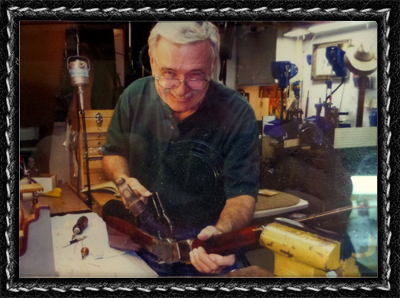I am text block. Click edit button to change this text. Lorem ipsum dolor sit amet, consectetur adipiscing elit. Ut elit tellus, luctus nec ullamcorper mattis, pulvinar dapibus leo.
Testing your 97’s left extractor and ejection problems:
- If the tail of the left extractor is broken off, that makes diagnosis easy.
- Touch the front of the extractor and try to wiggle it in and out. If it wiggles, it is bad. You should not be able to move it at all with the tip of your finger.
- Also look at the Ejector Spring from inside the receiver. The tip of the spring should be all the way forward in the hole it pokes through. They are cheap and should be replaced periodically anyway. The very early guns (1893s) had only an ejector block and did not have and ejector spring and hulls just sort of dribbled out. Note that Winchester’s solution was to just drill a hole through the side of the receiver and mount a spring with a screw from the outside 🙂 .
- The Ejector Block, inside the receiver, that sits to the rear of the ejector spring hole, sometimes falls out and the gun won’t eject. Look and make certain it is still there.
- Over the top of the front end of the extractor is a thin, flat “wing” that extends from the body of the breech bolt. This “wing” sometimes breaks off or cracks. Use a magnifying lens to look for a crack right along the base of the “wing” at the body of the breech bolt. For some reason, if this “wing” is missing, broken, or cracked, you will not get the best ejection. If your breech bolt has the described “wing” problem, you need another breech bolt, although, I have added metal (weld) and re-machined some.
- The right extractor sits against a plunger and spring. That plunger and plunger hole and spring need to be clean and lightly oiled. Sometimes they are badly scared and need to be replaced.
- Extraction and ejection in a 97 is a balancing act between the left extractor, the right extractor, and the ejector spring.
1)The lighter tension, ’73 Wire Lever and Lifter springs are usually only used with the lighter, aluminum carriers.
2) Be certain your hammer is down when you store your gun — even for just a week. The lightened springs can sometimes take a “set” (the spring industry has some special terms for this).
3) Always check your screws and “snug them up” before a match or hunting trip, sometimes stuff falls out☹. I like a little “Purple” Loctite on the threads.
4) Keep the firing pin extension on your ’73 or ’66 clean and lubed to reduce friction and wear – this is an important friction and wear spot.
5) Keep the action bar track (groove) on the left side of your ’97’s carrier clean and lubed — this is an important friction and wear spot.
6) If your rifle is a .357, it may like ammo loaded between 1.510 and 1.550” over-all length. The ’73 will likely lever smoother and your Marlin or Rossi will likely feed better. Personally, I like around 1.530 in a .357 case with a broad-pointed RNFP bullet. The narrow pointed, truncated 105g bullet in a .38 case can be problematic in some rifles if loaded to .38 spl OAL. Some Marlins prefer around 1.510”OAL, others like up to 1.570”. Most Rossi’s like around the same length. Marlins can be very sensitive about the over-all length and, reportedly, sometimes the shape of the bullet.
7) Note: If you own or operate an auto repair shop, you will be charged an extra 9% for “shop supplies. ![]()

